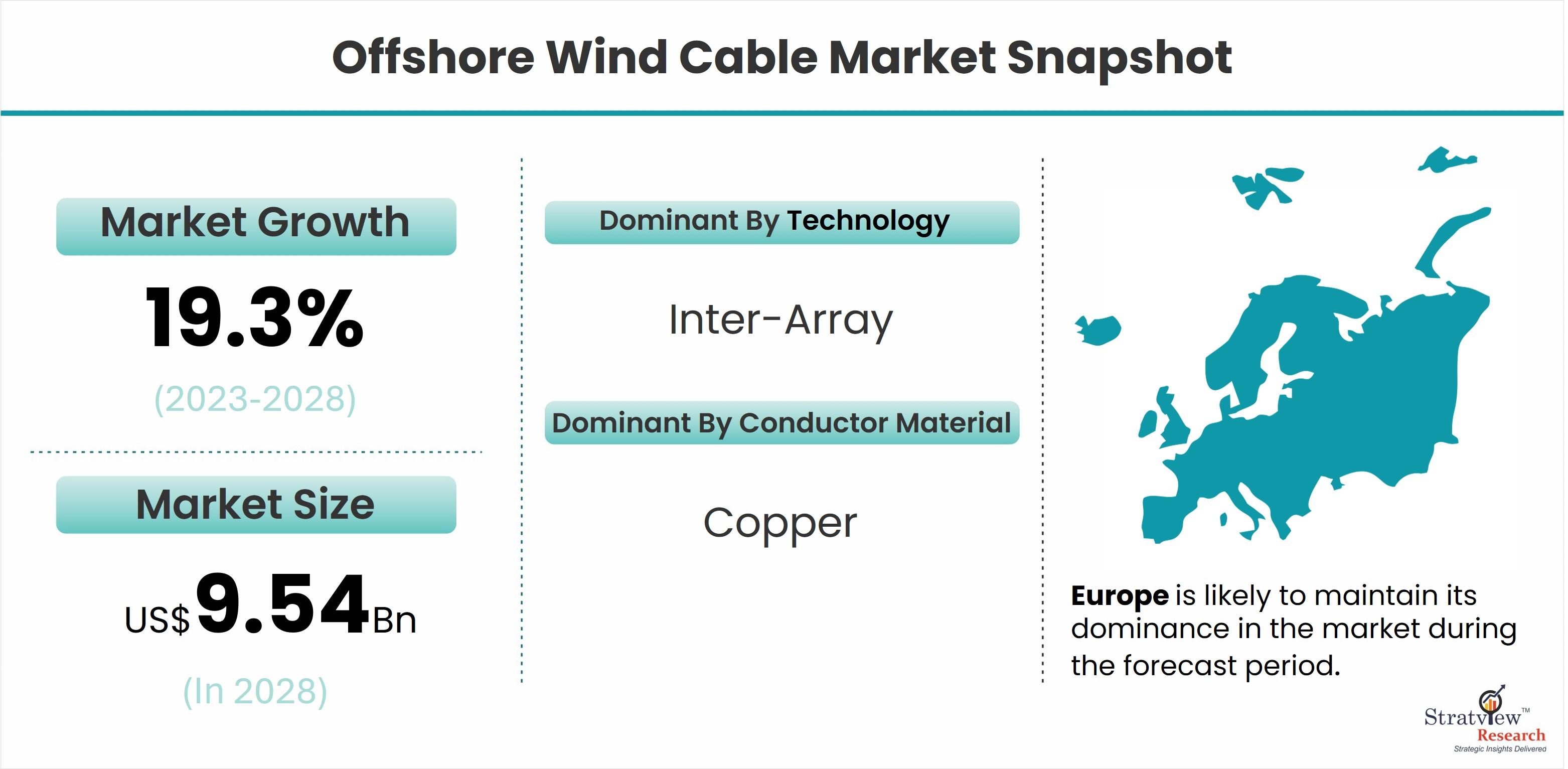According to Stratview Research, the offshore wind cable market was estimated at USD 3.3 billion in 2022 and is likely to grow at a CAGR of 19.3% during 2023-2028 to reach USD 9.54 billion in 2028.
As the world transitions towards renewable energy sources to combat climate change, offshore wind energy has emerged as a key player in the renewable energy landscape. At the heart of offshore wind farms lies a crucial component: the offshore wind cables. These cables serve as the vital link between the wind turbines at sea and the onshore grid, enabling the transmission of clean energy to power homes and businesses. This article provides insights into the offshore wind cable market, exploring its significance, challenges, and future prospects in bridging the gap towards a sustainable energy future.
The Significance of Offshore Wind Cables:
Offshore wind cables are the lifelines of offshore wind farms, responsible for transmitting electricity generated by wind turbines located at sea to onshore substations. These high-voltage submarine cables are designed to withstand the harsh marine environment, including strong currents, corrosive seawater, and challenging seabed conditions. Without these cables, the vast potential of offshore wind energy would remain untapped, hindering progress towards a low-carbon future.
Key Drivers of Growth in the Offshore Wind Cable Market:
Several factors are driving the growth of the offshore wind cable market:
Increasing Offshore Wind Capacity: The rapid expansion of offshore wind capacity worldwide, driven by declining costs, technological advancements, and supportive government policies, is driving demand for offshore wind cables. Countries across Europe, Asia, and the Americas are ramping up their offshore wind ambitions, leading to a surge in cable installations.
Technological Advancements: Innovations in cable design, materials, and installation techniques are enhancing the efficiency, reliability, and performance of offshore wind cables. Advancements such as HVDC (High-Voltage Direct Current) transmission, composite materials, and improved cable protection systems are optimizing energy transmission and reducing maintenance requirements.
Grid Integration and Interconnection: Offshore wind cables play a crucial role in integrating offshore wind farms into the onshore grid and facilitating cross-border energy exchange. Interconnection projects, such as offshore grid networks and international power links, are enabling the efficient sharing of renewable energy resources and enhancing energy security and resilience.
Challenges and Opportunities:
Despite its promising outlook, the offshore wind cable market faces several challenges:
Cost Competitiveness: The cost of offshore wind cables remains a significant barrier to widespread adoption, particularly for projects located further offshore or in deeper waters. Continued innovation, standardization, and economies of scale are essential for driving down costs and improving the competitiveness of offshore wind energy.
Environmental Considerations: The installation and operation of offshore wind cables can have environmental impacts, including disturbance to marine habitats, potential risks to marine wildlife, and conflicts with other ocean users. Sustainable siting, environmental monitoring, and mitigation measures are necessary to minimize these impacts and ensure responsible offshore wind development.
Technological Risks: As offshore wind projects move into deeper waters and more challenging environments, technological risks associated with cable installation, maintenance, and reliability become increasingly significant. Research and development efforts focused on risk mitigation, asset management, and predictive maintenance are critical for ensuring the long-term viability of offshore wind cables.
Conclusion:
The offshore wind cable market plays a pivotal role in enabling the growth of offshore wind energy and bridging the gap towards a sustainable energy future. By addressing key challenges, embracing technological innovation, and fostering collaboration among industry stakeholders, the offshore wind cable market has the potential to drive continued growth, reduce carbon emissions, and create a more resilient energy infrastructure. As offshore wind continues to expand its reach across the globe, the importance of offshore wind cables in facilitating this transition cannot be overstated.
